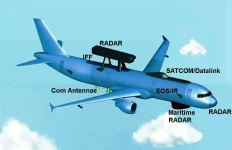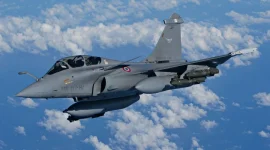- Views: 3K
- Replies: 29
India's programme to develop the Advanced Medium Combat Aircraft (AMCA), envisioned as a 5.5-generation stealth fighter, is facing increased scrutiny as leading global aerospace nations push forward with highly advanced sixth-generation fighter projects.
Amid this rapidly evolving technological landscape, Air Marshal S.B.P. Sinha (Retd.), a former Deputy Chief of the Indian Air Force (IAF), has asserted the continued importance of the AMCA, highlighting that it was designed specifically to meet India's unique strategic requirements rather than compete directly with speculative future aircraft like the conceptual F-47 or J-36 often discussed in defence circles.
However, the acceleration of next-generation fighter concepts worldwide introduces a pressing challenge. Experts suggest the timeframe for the AMCA to maintain its peak operational significance is diminishing, placing critical importance on India rapidly advancing the aircraft's development and production phases to ensure its competitiveness in future air combat scenarios.
Air Marshal Sinha, drawing on his extensive experience with the IAF's modernisation efforts, emphasizes that the AMCA's primary value proposition is its tailored capability for India's operational context.
In recent remarks, he explained the AMCA aims to provide the IAF with dominance in regional airspace, seamless integration with indigenous systems such as the Uttam radar and Astra missile, and effective operation within contested environments.
He dismissed comparisons with potential sixth-generation platforms from the US or China as premature, stating, "The AMCA is about capability, not competition with platforms that don’t yet exist in operational form."
Despite this focus on national needs, the global military aviation sector is undergoing significant transformation. Nations including the United States (with its Next Generation Air Dominance - NGAD program), the United Kingdom and partners (developing Tempest/Global Combat Air Programme), and China (with its rumoured J-XX projects) are actively pursuing sixth-generation technologies.
These future concepts often include features like artificial intelligence (AI)-driven autonomous functions, advanced networking, directed-energy capabilities, and the flexibility of being optionally manned. The progress in these programs, alongside advancements by regional players like Turkey and South Korea in sophisticated aircraft development, potentially narrows the technological advantage India seeks.
This global push towards the next generation underscores a potential risk tied to the AMCA's development schedule. Recent clearance by India's Cabinet Committee on Security (CCS) in March 2024 sanctioned the development of AMCA prototypes, a crucial step forward.
However, current projections anticipate the first flight of the AMCA Mk1 around 2028-2029, with squadron induction potentially starting in the mid-2030s. The more advanced Mk2 version aims for full operational capability by 2040. This timeline carries the risk of overlapping significantly with the expected entry into service of sixth-generation fighters globally, which could impact the AMCA's relative capability upon its wider deployment.
Air Marshal Sinha expresses confidence in the AMCA's eventual contribution, viewing it not as an attempt to match global competitors but as a vital asset tailored for India's defence needs over the next three decades. He envisions the AMCA acting as a force multiplier, networked with India's drones, Airborne Warning and Control Systems (AWACS), and missile defence infrastructure.
Nevertheless, he stressed that efficient and timely execution is paramount, concluding, "We have the talent and the vision. Now we need speed."



